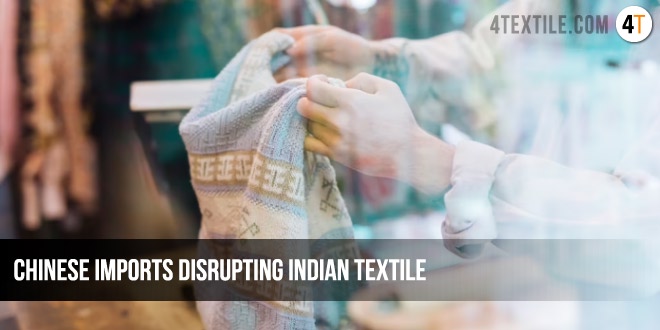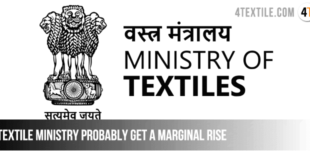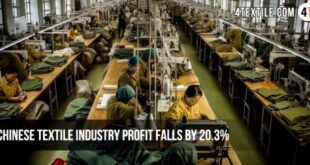Chinese imports disrupting Indian textile: Many countries around the world are dependent on cheap Chinese imports. If we see closely, we can observe that the industries of the countries like Pakistan, Sri Lanka, Uzbekistan and certain African nations which are dependent on imports from China slowly started to degrade with time. Now China is eyeing the textile industry of the European nations and specially trying to increase exports to India which is in a way jeopardizing the textile industry of our mother nation.
Chinese imports disrupting Indian and global textile markets
Many countries around the world are dependent on cheap Chinese imports.
Indian textiles have a rich history behind it. The earliest evidence of textiles can be traced back to the Indus Valley civilisation where cotton was used to weave clothes. Even the earliest of the Vedas i.e. the Rig Veda also has essential information about ancient textiles. Ramayana and Mahabharata also depict a wide variety of clothes and fabric being worn by the kings and the people of his kingdom. The history of the Indian textile industry can be traced back to the Mauryan Empire of 3rd Century BC. Indian textiles from time immemorial have played a crucial role in developing our economy and contributed immensely towards its growth.
The Covid 19 pandemic ruptured the whole textile industry of the European nations as a result of which the European countries started giving tender to Chinese companies to meet with the high consumer demand of textile products. The designs were given to Chinese companies and they quickly learned the craft and hence increased their production manifolds to supply the European markets. And the most interesting of all is the place of rapid manufacturing of these textile goods in China i.e. the city of Wuhan, the place from where the Covid 19 virus spread. These goods were being sold in Europe, especially in Italy as “Made in France” products. Moreover, since China had the designs, they even flooded the European markets with duplicates of the original products at very cheap rates and in a way China started to dictate the terms of the textile market in Europe. Looking at another country Uzbekistan, which is the heart of a complex nomadic and oasis culture and also a part of the famous silk route has also come under Chinese influence. Uzbekistan has a rich and prolific textile language as caravans traded their textile products and embroideries with the world down the ages. There is a place called Fergana Valley in Uzbekistan whose women were famous for their extraordinary embroidered Kaftans. But now this market is flooded by cheap synthetic kaftans printed and made in China ruining the authenticity of the products.
India’s textile sector is the second largest after agriculture and contributes immensely to the GDP i.e. roughly around 2.3% of our country’s GDP. This textile industry provides employment for approximately 4.5 crore people directly and about 6 crore people indirectly through some allied services which is a huge number. The growth of this textile sector has played a big role in reducing the widespread unemployment prevailing in the post colonial period of India. In the recent times, the textile industry in India is facing a consistent decline especially since March 2022 as measured by the Index of Industrial Production (IIP). The Index value which was 118.5 as measured by IIP in March 2022 fell to 102.3 by year end. Textile exports had a very big hit, and it is on a downward trend. But this trend is just the opposite in case of textile imports i.e. it has seen a gradual and consistent rise. The reason for such a case is the flooding of cheap textile imports from China. This in a process is jeopardizing the lives of millions of people in India who are dependent on this sector for their livelihood. If we look at the textile exports from India, it is suffering just because of the high preference other countries are giving to the cheap Chinese goods which eventually make the Indian imports less competitive in the international sphere. There is no denying the fact that the Indian textile sector is giving tough competition to the Chinese products and is likely to be more competitive once the textile infrastructure in our country is enhanced.
India is the only country in the world where genuine textiles exist still now. Although the British thrashed our textile sector and almost destroyed our indigenous manufacturers but due to the efforts of revivalists like Kamala Devi Chattopadhyaya and Pupul Jayakar, the textile industry survived the post colonial era. India manufactures a lot of high quality silk like the Banaras silk and the Mulberry silk which are soft light and fine. They need to be promoted in our domestic market as people still prefer Chinese silk over these due to its cheap price. China has always played a role of a predator. It has always been known for its sericulture, as India has been known for its unusual silk yarns. Hence, China initially dumped their silk yarn in India at prices of a fraction of their costs, and then slowly raised the prices to set up a lucrative business.
The Government of India has taken steps in this regard to protect and incentivize our textile sector. The GOI has made plans to establish textile parks to promote this sector. Also the government has started the PLI (Production linked Incentive) scheme to boost manufacturing of textiles. Moreover India has also allowed 100% FDI in this sector through automatic route as well so that more companies invest in this sector to give it the required push. Although the Government of India has taken advancing steps towards revamping the infrastructure for textile manufacturing but they can also take steps towards banning the imports for a while, especially from China. A ban on imports of Chinese yarn will perhaps affect production for a while, but we have the resilience in our textile techniques and as a country that taught the world the beauty of producing textiles, can easily find alternatives. Covid-19 is a wake-up call for India to take stern steps to preserve its textiles. The last thing we would want is India to face the same fate as that of the European countries. The beauty of the peacock must not succumb to the fire of the dragon.
 4Textile.com World Textile & Apparel Industry Events, News
4Textile.com World Textile & Apparel Industry Events, News







